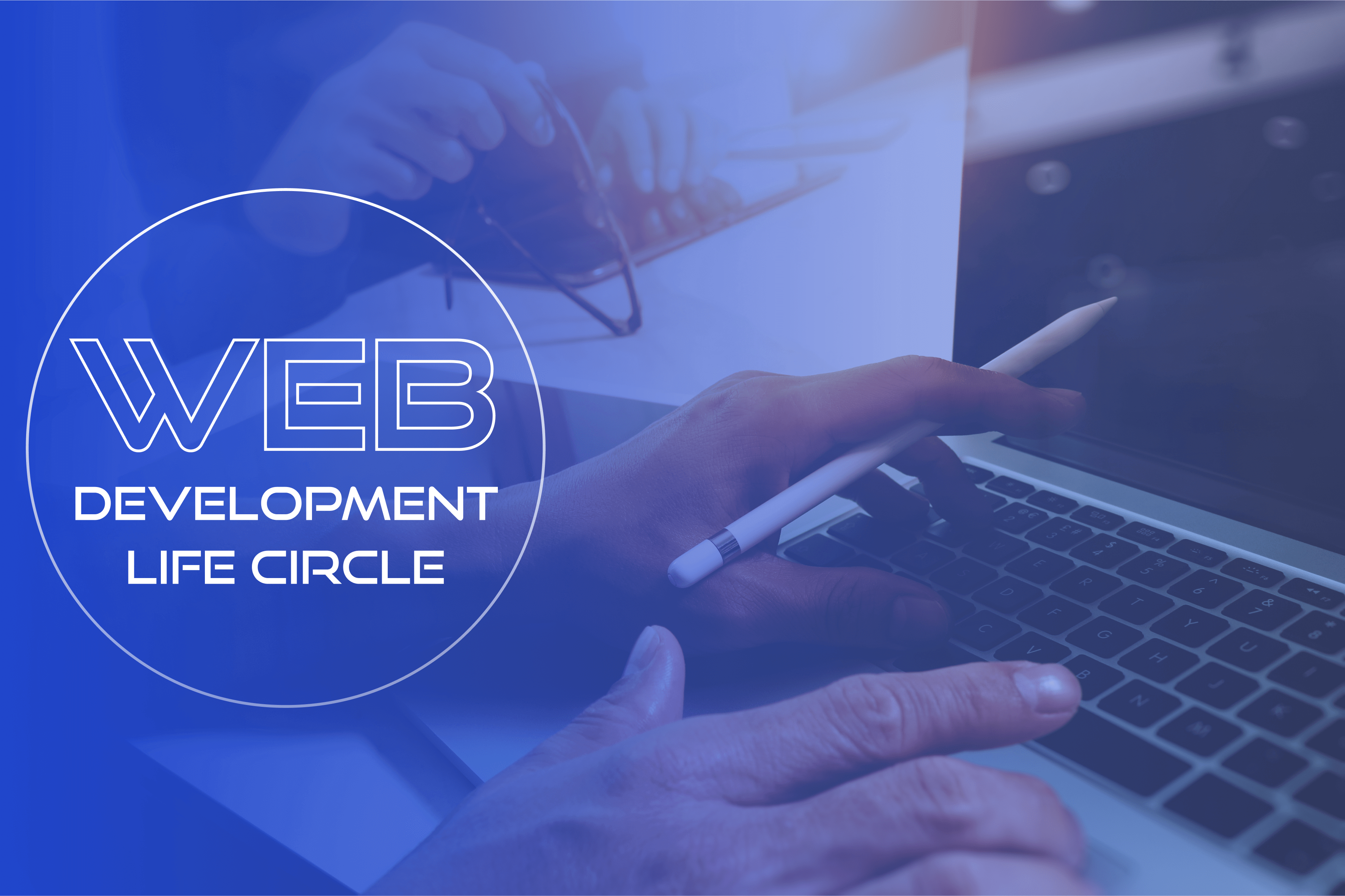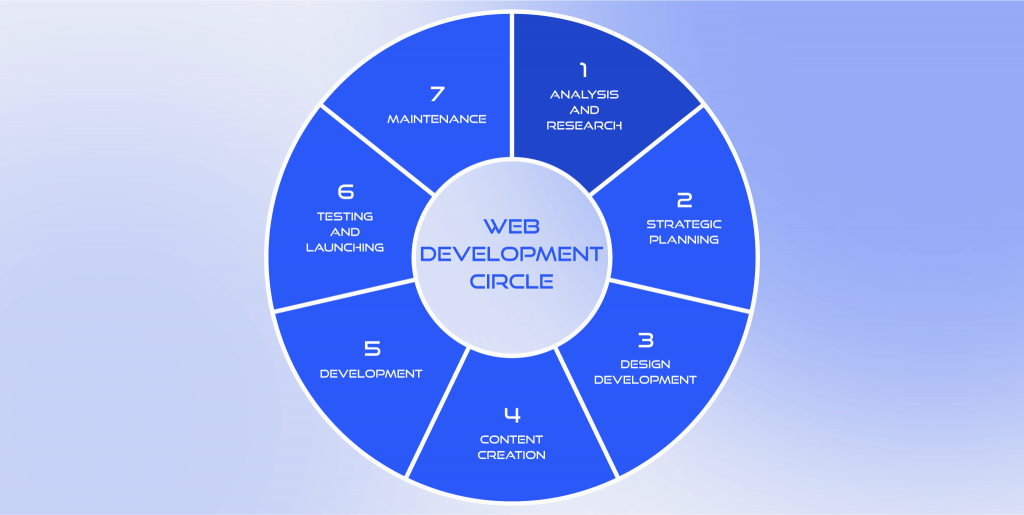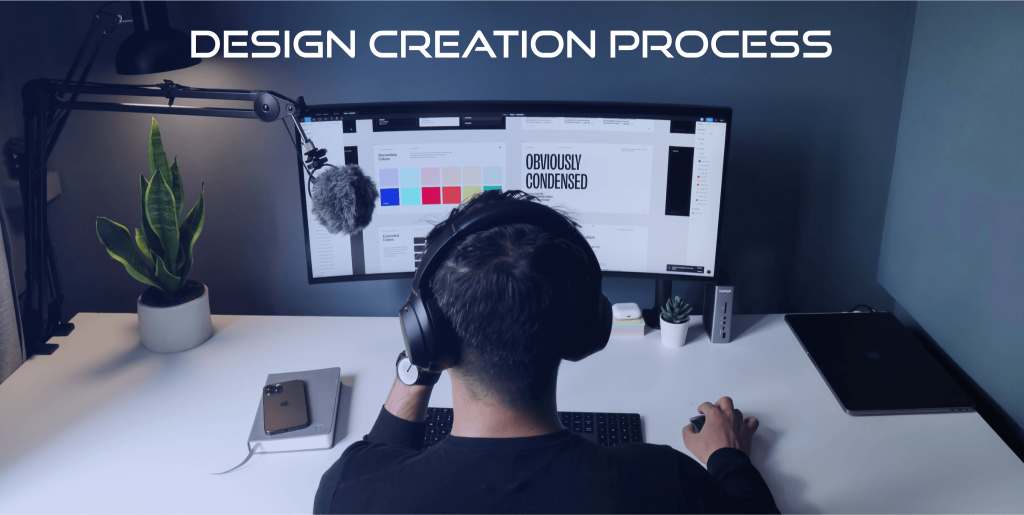
In the modern world, you simply cannot imagine a popular commercial product or brand without a website. Every business owner should consider creating and constantly honing the website to keep up with the competitors. Most people can’t evaluate the ample volumes of work for developing a cohesive and functional website. Some people even think that developers can conjure up a good website in a couple of hours.
This article will help you sort it out and gain a deeper understanding of a web development life cycle.
What is Web Development?
First of all, what’s even web development? Web development is a complex and durable process of creating a website or a web structure that functions on the internet. Web development can be both creating a single-page business card website or a web application.
Most people think that web development includes only coding, but that’s a big misconception.
What is the Web Development Cycle?
A web development cycle comprises all phases that need to be overviewed when compounding a website. Creating a wholesome project from scratch requires a team of highly skilled professionals. The web development cycle’s main stages can be divided into research and planning, designing, generating the content, coding, testing, and maintaining the final product. Web development cycle duration can differ depending on the complexity of the project and the amount of required work.
The 7 phases of the web development cycle

Analysis and Research
That’s the first and the essential phase for choosing the right path in the development process. Before even starting the project, you should evaluate information about the client, the field, and the competitors. Developers should be aware of the sphere nuances of the client’s product and develop the website according to all the requirements.
For example, even the entertainment portal for teenagers from 13 to 15 and young folks from 16 to 19 will have completely different structures, goals, and visual hierarchies. Create the buyer persona and estimate all of the interests, lifestyles, and preferences of your potential users.
To create the guideline for further steps, you should ask a whole ton of questions.
What kind of users is your target audience? Why should they visit your website? What type of content will you provide? What makes your product/service/business stand out amongst the competitors? What are the requirements for the website? What feature would you like to create?
Strategic planning
The strategic stage of the cycle includes planning all the aspects of the website, such as content, marketing, selecting technologies, and coding language. At this stage of the project, the contractor starts selecting professionals which will be involved in the website creation, forms a committed team, and starts appointing tasks.
The sitemap creation is essential for this stage. The sitemap needs to be created even before the start of the coding process because it will give an essential understanding of how different areas of the website will be connected and interwoven. Moreover, it helps to understand the future level of the user-friendliness of the website.
Another paramount process that begins at this phase is designing, specifically creating wireframes and mockups. By doing this, you will help clients to gain an understanding of what the final blueprint of the project could look like. The wireframe is like a skeleton of the future website. It doesn’t involve any pictures, colors, or graphics. As soon as the wireframe is endorsed by the client, the detailed mockup is put into progress. The client needs to be highly involved in this process and communicate all his needs and observations because making major corrections in the next stages will be more complex.
The second stage also involves creating a Gantt chart with a detailed description and duration of the further website development process.
The approximate duration of the second stage is 1-2 weeks.
Designing
At this point, the final outlook of the website starts taking shape. The designer should once again reevaluate the target audience, communicate with the client, and select the further designing steps. The designer improves and complements previously created wireframes with color themes, buttons, preliminary content, and visual elements. They define final fonts, visual hierarchy, and signature style. All the visual context, layout, structure, and hierarchy are designed and asserted with the client at this stage.

The estimated time of the design stage varies depending on the complexity of the project and typically lasts from two to twelve weeks.
Creating the content
You cannot underestimate the importance of the proper content of your website. Even the most beautifully designed website wouldn’t convert visitors into leads without relevant copywriting. Finding ways to communicate with visitors and encourage them to interact with your webpage will never be possible with plain pages. Content writing includes information about your company and services, CTA’s, enticing texts, blog posts, and texts for improving SEO.
Content is the essence of your website that should create contact with your potential users and help you stand out from the crowd of trite cliches.
Development
The development stage is the most time-consuming and resource-intensive part of creating the website. In plain words, BramblingTech developers are coding the website brick by brick. There are two types of development — frontend and backend.

Frontend development
Frontend developers are responsible for converting the static design into HTML pages, implementing mobile-friendliness, adding interactive elements, developing and maintaining the user interface. Simply put, a front-end developer’s key responsibility is guaranteeing that users can smoothly interact with the website.
Backend developers
Backend developers manage revitalization for each specific element of the website. They literally code the instructions, so each element performs the demanded actions. This part of the web development life cycle turns the user interface into a functioning website by cooperating with servers.
Website search engine optimization (SEO) is also one of the backend developer tasks.
Testing and Launching
At this point, the QA (quality assurance) team runs a variety of tests to detect any possible bugs or issues in codes. Every single form, link, script, and piece of code should be tested before the official launch of the website. The wholeness of the project is essential, and testing is a final frontier before releasing the ultimate product. Once the testing is done, it’s time to deploy the website to the server. Typically, the File Transfer Protocol (FTP) is used for this purpose.
Maintenance
You cannot simply deliver a website like a piece of cake, and then leave it as it is! Website is a service, and you need to be on track with the CMS updates and worldwide trends. Constantly incoming feedback from the users opens a whole new range of ideas for improving the existing website. No matter how highly qualified your team is, there are always unpredictable bugs and issues that pop up after the launch, and fixing them is always a number-one priority! Maintenance is an everlasting process and the last stage of the web development life cycle.
Conclusion
Creating a coherent website is a sophisticated process that requires a wide range of professionals who can cater to predefined tasks. Every outsourcing company adjusts its web development life cycle timeline accordingly to the complexity of the project and the business of the team members.
BramlingTech’s team of highly skilled experts is ready to put your bravest idea into practice. Contact our specialists for detailed information and an approximate calculation of your web development life cycle. Let’s communicate further steps!







